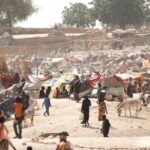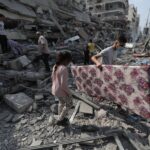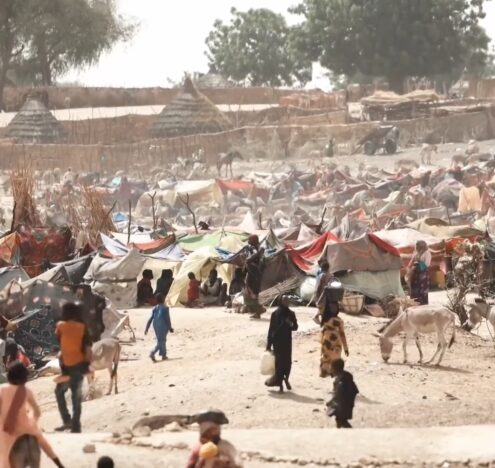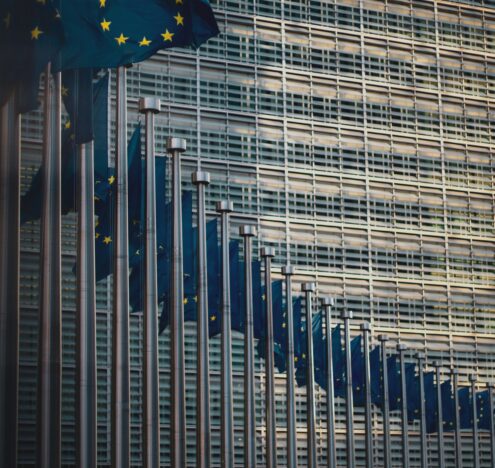After the withdrawal of US forces from Afghanistan and the rapid takeover of the country by the Taliban, the plight of the Afghan refugee is again the focus of the world’s attention. The harrowing images of Afghans clinging to — and falling from — the outside of US military planes have come to symbolize the panic and despair felt by those fleeing the new order.
The urgency of the situation has understandably prompted politicians, activists, and commentators to speak of the moral responsibility of the US and its allies to take in Afghan refugees. But amidst these well-intended calls, we tend to forget how, for years, US policies have been inflicting mass suffering on millions of Afghan refugees in Iran, at times even driving their flight to Western countries.
One such policy is the Trump administration’s “maximum pressure” campaign against Iran, many components of which remain fully intact even today under the Biden administration. President Donald Trump kickstarted the campaign in 2018 by abandoning the Iran nuclear deal — or the Joint Comprehensive Plan of Action (JCPOA) — which had eased international sanctions on Iran in return for strict curbs on the country’s nuclear program. President Trump’s withdrawal was surprising and unwarranted, especially because Iran had been fulfilling its end of the deal. The president went on to impose some of the most severe sanctions in history, thereby sending Iran’s economy into a veritable tailspin. But it was amongst Iran’s most vulnerable, in particular its sizable Afghan population, that the bite of the sanctions was most keenly felt.
IMPACT ON AFGHAN REFUGEES IN IRAN
The pummeling of the economy meant a hike in inflation, periodic spikes in consumer prices, and the dipping of the national currency to historic lows. For the millions of Afghans in Iran, this entailed a drop in living standards and income levels, depletion of their already modest savings, declining remittances back to Afghanistan, and fewer work opportunities in sectors, such as construction, farming, sanitation, brick-making, and mining, which have traditionally been more attractive for Afghans.
Had Iran not been under crushing US sanctions today, its economy would have been able to offer better opportunities to its Afghan community. Furthermore, fewer Afghans would have felt the need to make the dangerous journey to Europe in search of better prospects.
Jan Egeland, Secretary-General of the Norwegian Refugee Council, observed how sanctions were “making it increasingly impossible for Iran’s most marginalized to enjoy any quality of life in an economy so strangled.” Some Afghan refugees were “skipping meals, some are relying on neighbors to help them, and some are selling assets to cover the costs.” The children of foreign nationals were also severely hit, with child labor increasing “dramatically” due to the economic hardship brought about by sanctions.
The vulnerability of Afghans was compounded by the fact that US sanctions had restricted their access to much-needed humanitarian relief. Due to sanctions, aid organizations could no longer access funds for setting up shelters and providing critical aid and basic relief items to those most in need, such as Afghan refugees in Iran. In other words, humanitarian resources, already scarce, were being used to circumvent the labyrinthine bureaucratic hurdles created by US sanctions instead of being used for actual aid efforts. In the words of Egeland, organizations like his “increasingly spend their time and resources on bureaucracy connected to ever-increasing sanctions, rather than delivering humanitarian aid.”
Having reached the end of their tether after years of seeing their economic prospects plummet, many Afghans began to look outside Iran in search of economic security and stability. It is little wonder then, that the International Organization for Migration announced that more than 700,000 undocumented Afghans in Iran had returned to their country in 2018. This “massive increase,” explained the organization, was “largely driven” as a result of the economic hardship induced by US sanctions. A far lower number of Afghans would embark for Europe, a development that prompted a senior EU official to admit that US sanctions, which had “significantly deteriorated the economic situation in Iran,” were contributing to the Afghan migration to this trend.
With the onset of the global COVID-19 pandemic, the economic prospects of Iran’s Afghan community took yet another turn for the worse. Whereas richer nations could afford to protect themselves against the economic scourge of the pandemic, cash-strapped Iran had no comparable financial cushion to fall back on. Its response to the pandemic was further hobbled when Washington blocked Tehran’s request for a $5 billion emergency loan from the International Monetary Fund for offsetting the economic impact of the pandemic. To put this figure in perspective, consider that by the end of 2020, Germany, whose population is roughly the same as Iran’s, had allocated €1.3 trillion stimulus package to deal with the fallout of the pandemic. For Afghans already reeling from the economic consequences of US sanctions on Iran, life was rendered even less bearable by the global pandemic. Afghan authorities announced in early 2021 that 850,000 Afghans had returned home from Iran due the outbreak.
But despite hardships, millions of Afghans continue to live in Iran. According to the UN High Commissioner for Refugees, more than 3.5 million Afghans were residing in Iran in October 2020.
THE THIRD WAVE
Afghan migration to Iran is nothing new. Hazaras were already settling in the country in the nineteenth century. But there have been two major waves of Afghan migration to Iran in the past half a century. The first was during the early years of the Soviet occupation (1978–1985) and the second during the Taliban’s rule (1996–2001).
A number of factors render Iran a preferable destination for Afghans fleeing war or seeking work. The two countries share a 920-kilometre border, a common language, as well as deep historical and cultural bonds. The presence of an established community of Afghans in Iran is another pull factor. Those same factors persist today and are driving many Afghans fleeing the Taliban to embark for Iran, either as a transit point to Western countries — especially Europe — or for resettlement in Iran.
According to Fatemeh Ashrafi, the head of an association that protects refugee women and children, nearly 500,000 Afghans have crossed the land border between Iran and Afghanistan in the last four months. Ashrafi says that since the Taliban assumed control over Kabul, more than 7,000 have “illegally” entered Iran each day. She calls this the “third wave” of Afghan migration to Iran. The government of Iran has set up camps along its border to Afghanistan but has stressed, even before the Taliban took over in mid-August, that the country is unable to absorb the incoming refugees. Ordinary Iranians, on the other hand, have taken it upon themselves to support incoming Afghans. Some have even taken to social media sites like Twitter to offer their homes to refugees looking for accommodation.
Due in large part to the ravaging impact of US sanctions on Iran’s economy, most Afghans in the country — especially the new arrivals — face a precarious future. This helps explain why many Afghans are currently making the long, taxing, and perilous journey to Europe despite the various incentives to stay in Iran (e.g., shared language, culture, and geographic vicinity). The Turkish and Greek governments have made this journey even more arduous. Ankara has built a three-meter high wall, ditches, and barbed wire along its border with Iran while Athens has completed a 40-km fence on its border with Turkey as well as a new surveillance system.
Had Iran not been under crushing US sanctions today, its economy would have been able to offer better opportunities to its Afghan community. Its construction sector, for instance, would have been far better positioned to absorb Afghans looking for work. Furthermore, fewer Afghans would have felt the need to make the dangerous journey to Europe in search of better prospects.
A REQUEST FOR WORTHIER PURSUITS
The role of US sanctions in exacerbating the precariousness of Afghan refugees in Iran — and in so doing also helping drive their migration to Europe — prods one to reflect on the types of debates triggered by humanitarian crises. While there is a strong tendency to focus solely — or primarily — on the moral responsibility of supposedly high-minded Western governments to offer protection, far less attention is given to how their destructive policies create and fuel those very crises in the first place.
It is necessary and praiseworthy to urgently grant asylum, protection, and other forms of humanitarian aid in order to lessen the suffering of others. But if the moral imperative to minimize suffering is to truly become an overriding consideration in crafting policy, a far worthier pursuit would be to profoundly rethink policies, such as sanctions, military interventions, and arms sales, which inflict boundless pain and death on the world’s most vulnerable populations.
Sajjad Safaei is a postdoctoral researcher at the Max Planck Institute for Social Anthropology in Halle, Germany.





















